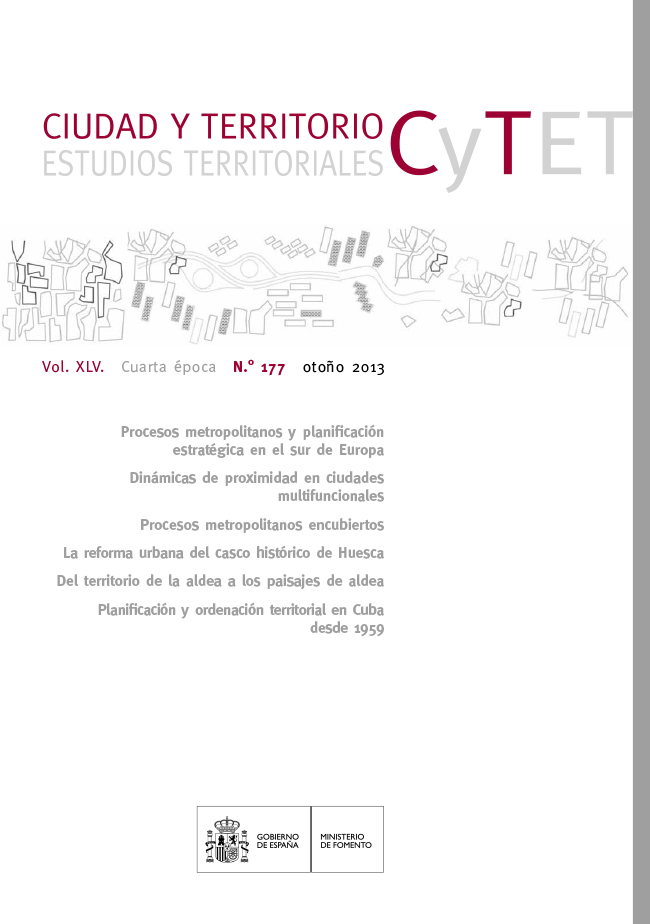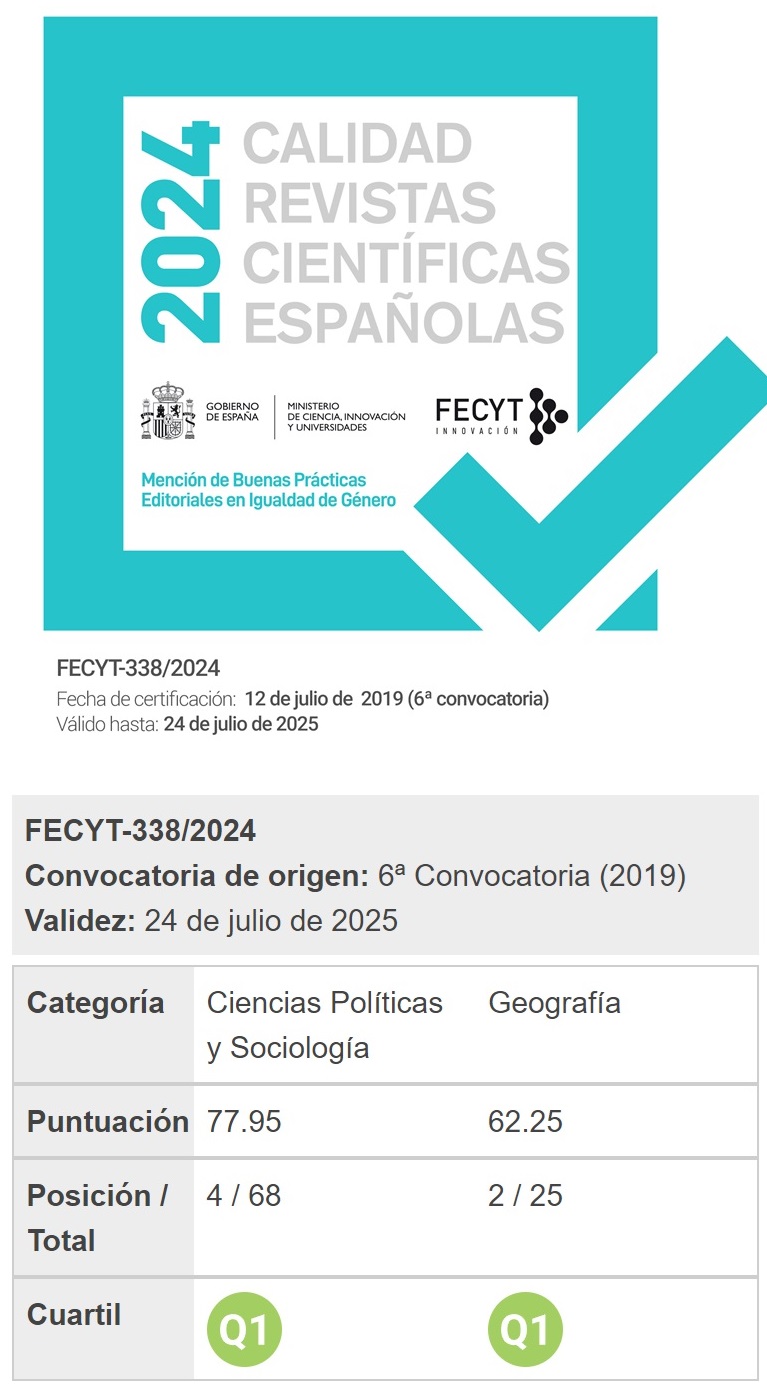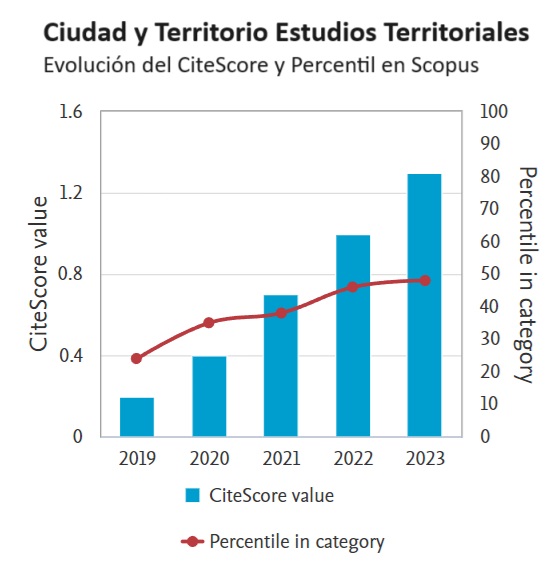Planificación y ordenación territorial en Cuba desde 1959: barreras institucionales actuales y perspectivas
Palabras clave:
Planificación territorial, ordenación del territorio, economía planificada, poder popular, planResumen
El análisis que se propone intenta explicar las distintas fases que ha seguido
la planificación del territorio en Cuba desde el triunfo de la Revolución en 1959.
Se parte de una hipótesis general, que en los países de economía planificada de inspiración
soviética casi siempre la planificación del territorio ha estado subordinada a
la económica. También, que la escala estatal de decisión se impone a la local y provincial.
No obstante, el estudio de las tres fases históricas que se pueden distinguir
en la Cuba postrevolucionaria ofrece importantes matices. Se parte del modelo soviético
clásico de centralización y predominancia del economicismo. En los 1990 la caída
de la URSS abre un periodo de desconcierto, donde incluso se cuestiona el hecho de
planificar. Por último, desde hace unos años se pretende combinar eficiencia planificadora
con mayor autonomía de las autoridades locales y provinciales, y una superior
consideración del territorio como variable a tener en cuenta en los planes de desarrollo
general de la economía. A lo largo del trabajo, se aportan numerosas referencias
sobre leyes, planes y acuerdos políticos que han marcado la evolución de las prácticas
planificadoras en Cuba en el último medio siglo. Al finalizar, se tratan algunos
aspectos del marco regulatorio e institucional prevaleciente que entorpecen la práctica
de planificación de los territorios en Cuba enunciándose los retos y las perspectivas
que enfrenta el país en el momento actual.
Descargas
Descargas
Publicado
Cómo citar
Número
Sección
Licencia
Derechos de autor 2013 Patricia Ramos Hernández, Rubén C. Lois González

Esta obra está bajo una licencia internacional Creative Commons Atribución-NoComercial-SinDerivadas 4.0.
Sin perjuicio de lo dispuesto en la legislación vigente sobre Propiedad Intelectual, y conforme a la misma, el/la los/las autor/a/es/as que publiquen en CyTET cede/n a título gratuito, de modo no exclusivo y sin límite temporal al Ministerio de Transportes, Movilidad y Agenda Urbana los derechos para difundir, reproducir, comunicar y distribuir en cualquier formato actual o futuro, en papel o electrónico, la versión original o derivada de su obra bajo licencia de Creative Commons Reconocimiento-NoComercial-SinObraDerivada 4.0 Internacional (CC BY-NC-ND 4.0), así como para incluir o ceder a terceros la inclusión de su contenido en índices, repositorios y bases de datos nacionales e internacionales, con referencia y reconocimiento en todo caso de la autoría del mismo.
Además, al realizar el envío, el/la los/las autor/a/es/as declara/n que se trata de un trabajo original en el que se reconocen las fuentes que han sido utilizadas en su estudio, comprometiéndose a respetar la evidencia científica y a no modificar los datos originales para verificar o refutar una hipótesis de partida; que el contenido esencial del mismo no ha sido publicado previamente ni se publicará en ninguna otra obra o revista mientras esté en proceso de evaluación en la revista CyTET; y que no se ha remitido simultáneamente a otra publicación.
Los autores deben firmar un Formulario de Cesión de Derechos, que les será enviado desde la Secretaría de CyTET una vez se acepte su artículo para ser publicado.
Con el objetivo de favorecer la difusión del conocimiento, CyTET se adhiere al movimiento de revistas de Open Access (OA) y entrega la totalidad de sus contenidos a diversos índices, repositorios y bases de datos nacionales e internacionales bajo este protocolo; por tanto, la remisión de un trabajo para ser publicado en la revista presupone la aceptación explícita por parte del autor/a de este método de distribución.
Se anima a las/os autoras/es a reproducir y alojar sus trabajos publicados en CyTET en repositorios institucionales, páginas web, etc. con la intención de contribuir a la mejora de la transferencia del conocimiento y de la citación de dichos trabajos.








 Enlace a CyTET en Linkedin
Enlace a CyTET en Linkedin